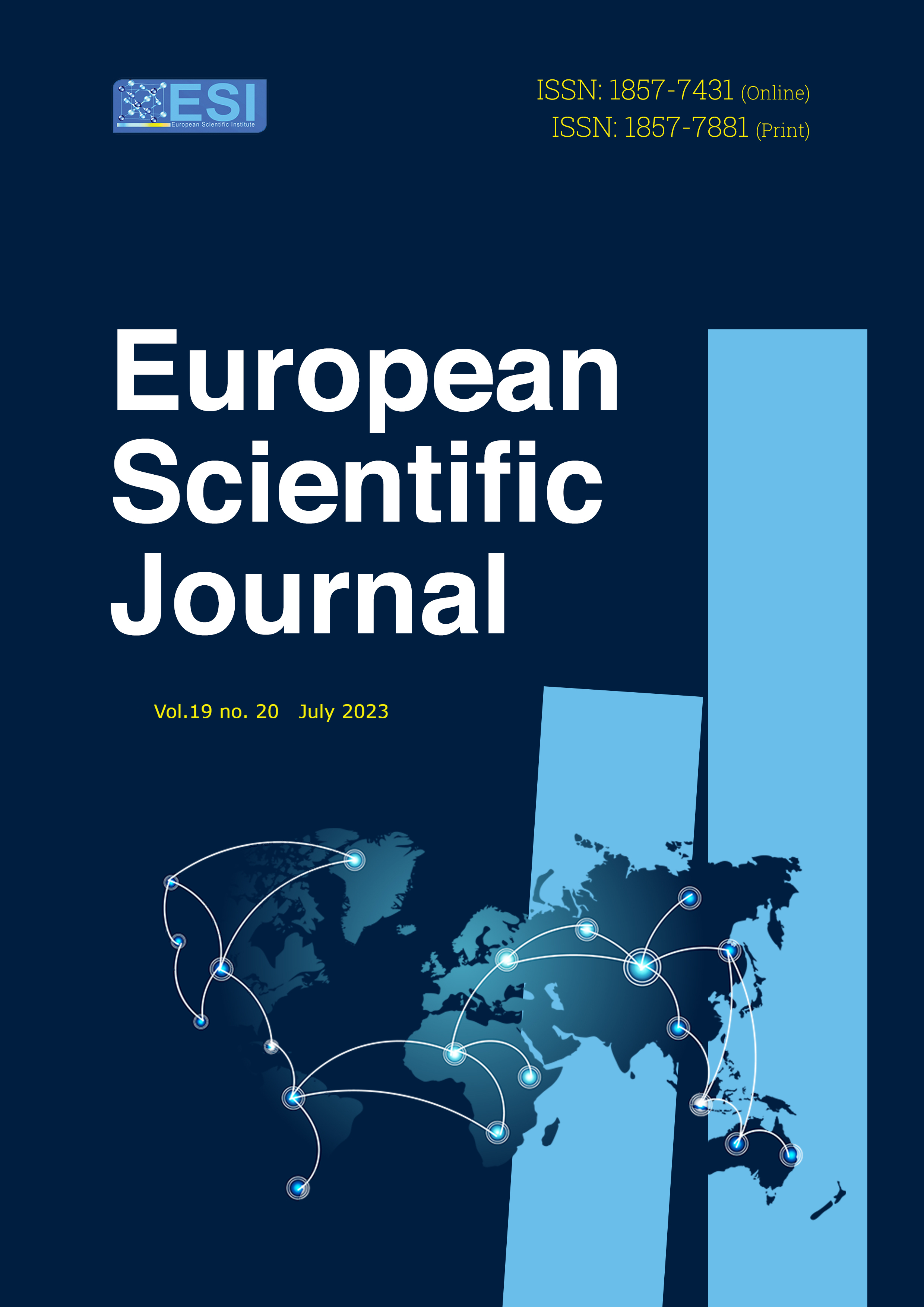The Effect of Immigrant Customer Service Representatives’ (ICSRs) Accents on Customers’ Experience and Satisfaction
Abstract
This study shows that most customers are frustrated because of the unintelligible communication they usually have with Immigrants Customer Service Relations (ICSRs). Customers’ experience worsens when they find it difficult to understand the customer representatives they are communicating with because their accents make them unintelligible, causing communication breakdown. This study adopted the qualitative research approach. Frame Analysis (FA) and Discursive Social Psychological (DSP) methods were used to analyze Reddit online forum users’ responses to a peer’s question posed on the forum. It found that accents play a significant role in why some customers, using American customers as cases, are rude to ICSRs. Aside from this, it also found that other factors, such as the organizations’ systems—long wait times to access CSRs, network connection failures, inexperienced CSRs, and acts of racism affect customer experience.
Downloads
Metrics
PlumX Statistics
References
2. Becker, L. & Jaakkola, E. (2020). Customer experience: Fundamental premises and implications for research. Journal of the Academy of Marketing Science, 48, pp. 630–648. https://doi.org/10.1007/s11747-019-00718-x
3. Bleier, A., Harmeling, C. M. & Palmatier, R. W. (2019). Creating Effective Online Customer Experiences. Journal of Marketing, 83(2), pp. 98-119. DOI: 10.1177/0022242918809930
4. Booth, A., Papaioannou, D., & Sutton, A. (2012). Systematic approaches to a successful literature review. Sage Publications Inc.
5. Cruz, P. A. T. & Lockwood, J. (2021). How customer service representatives lose control of the call: A metafunctional analysis. Journal of Applied Linguistics and Professional Practice, 15(2), pp. 142–162. https://doi.org/10.1558/jalpp.20368
6. Dio, C. D., Schulz, J., & Gurd, J. M. (2006). Foreign Accent Syndrome: In the ear of the beholder? Aphasiology, 20(9), pp. 951–962. https://doi.org/10.1080/02687030600739356
7. Faisal, H. & Drake, B. (2014). Everything connects: How to transform and lead in the age of creativity, innovation, and sustainability . McGraw Hill LLC.
8. Freberg, K. (2021). Social media for strategic communication (2nd Edition). Sage
9. Publications Inc.
10. Gentles, C. H. & Brown, T. H. (2021). Latin American and Caribbean teachers’ transition to online teaching during the COVID-19 pandemic: Challenges, changes, and lessons learned. Pixel-Bit- Revista De Medios Y Educacion, 61, pp. 131-163. DOI:10.12795/pixelbit.88054
11. Holton III, E. F., & Burnett, M. F. (2005). In Swanson, R. A. & Holton III, E. F. Research in organizations: Foundations and Methods of Inquiry. Berret-Koehler Publishres, Inc.
12. Hoque, F. & Baer, D. (2014). Everything Connects: How to Transform and Lead in the Age of Creativity, Innovation, and Sustainability. McGraw Hill LLC. Kindle Edition.
13. Husain, Z. (2013). Effective communication brings successful organizational change. The Business & Management Review, 3 (2), 43-50.
14. Joshi, S. (2014). Customer experience management: An exploratory study on the parameters affecting customer experience for cellular mobile services of a telecom company. Procedia-Social and Behavioral Sciences, 133, pp. 392–399.
15. Kozhemyakin, E. (2021). Mediatised home: Using semiotic repertoires in onlineworkplace communications. Communication Today, 12(2), pp. 58-66.
16. Kwon, Y. & Yi, Y. (2019). The effect of perceived economic mobility on customer aggression toward service employees: A darker aspect of customer behavior. Psychology and Marketing, 36(11), pp. 1120–1132. https://doi.org/10.1002/mar.21261
17. Lim, L. G., Tuli, K. R. & Grewal, R. (2020). Customer Satisfaction and Its Impact on the Future Costs of Selling. Journal of Marketing, 84(4), pp. 23-44. https://doi.org/10.1177/0022242920923307
18. Madan, B. (2017). Customer experience—An emerging frontier in customer service excellence. Competition Forum, 15(1), pp.198-208. https://www.researchgate.net/publication/341667795_Customer_Experience--An_Emerging_Frontier_in_Customer_Service_Excellence_In_Competition_Forum
19. Mahoney, L. M., & Tang, T. (2016). Strategic social media: From marketing to social change. John Wiley & Sons.
20. Michèle, B., Syngjoo, C., Egon, T., Eline van den, B-A., Jamison, J. C. et al. (2021). Unequal consequences of Covid 19: Representative evidence from six countries. Review of Economics of the Household; Dordrecht, 19I(3), pp. 769-783. DOI:10.1007/s11150-021-09560-z
21. Mishra, D. & Mishra, A. (2009). Effective communication, collaboration, and coordination in extreme programming: human-centric perspective in a small organization. Human Factors and Ergonomics in Manufacturing, 19(5), pp. 438–456.
22. Nortio, E., Niska, M., Renvik, T. A., Jasinskaja-Lahti, I. (2021). “‘The Nightmare of Multiculturalism’: Interpreting and Deploying Anti-Immigration Rhetoric in Social Media.” Journal of New Media and Society, 23 (3), pp. 438-456. DOI: 10.1177/1461444819899624
23. Noy, C. (2008). Sampling knowledge: The hermeneutics of snowball sampling in qualitative research. International Journal of Social Research Methodology, 11, pp. 327-344. doi: 10.1080/13645570701401305
24. Otto, A. S., Szymanski, M. D., & Varadarajan, R. (2020). Customer satisfaction and firm performance: Insights from over a quarter century of empirical research. Journal of the Academy of Marketing Science 48, pp. 543–564. https://doi.org/10.1007/s11747-019-00657-7
25. Packard, G. & Berger, J. (2020). How Concrete Language Shapes Customer Satisfaction. Journal of Consumer Research, 47(5), pp. 787–806. https://doi.org/10.1093/jcr/ucaa038
26. Palmatier, R. W., Houston, M. B., & Hulland, J. (2018). Review articles: Purpose, process, and structure. Journal of the Academy of Marketing Science, 46(1), pp. 1–5. https://doi.org/10.1007/s11747-017-0563-4
27. Reuschke, D. (2021). The surge in homeworking and new key issues for regional studies. Research Gate. https://www.researchgate.net/publication/348495488
28. Schwager, C. & Meyer, A. (2007), Understanding Customer Experience. Harvard Business Review, 2, (n.p.). https://hbr.org/2007/02/understanding-customer-experience
29. Tombs, A. & Hill, S. R. (2014). The effect of service employees’ accents on customer reactions. European Journal of Marketing, 48(11-12), pp. 2051–2070. https://doi.org/10.1108/EJM-03-2013-0115
30. Villarroel, O. F., Theodoulidis, B., & Burton, J., Gruber, T., & Zaki, M. (2014). Analyzing Customer Experience Feedback using Text Mining: A Linguistics-Based Approach. Journal of Service Research, 17 (3), 278–95.
Copyright (c) 2023 Anthony U. Utulu

This work is licensed under a Creative Commons Attribution 4.0 International License.








